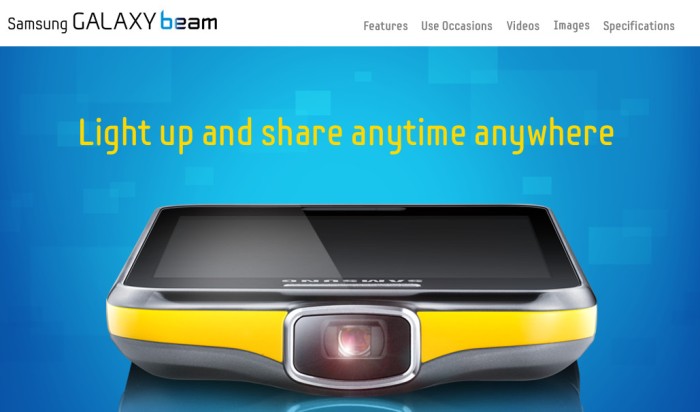‘Technology Failures’ that Are Conceptually Brilliant and Worth Pursuing
Not every commercially unsuccessful tech product can be considered a failure. They may have just been launched at the wrong place and the wrong time. It could be a simple problem with marketing. Some great concepts don’t become a hit not because they are bad but because of a number of other factors.
The following are some good examples of technology failures that can actually be considered as brilliant concepts that deserve a second chance:
1. Moto X
The idea of a customizable Android smartphone was widely talked about among tech sites and blogs. Google and Motorola’s advertising efforts were certainly not on the side of insufficiency. However, Moto X failed to become a hit. The colorful back plates and the option to customize the way the device looks failed to make a dent on Samsung dominance in the Android world. It did not help that Motorola was not able to meet to deliver all the customization options advertised. Also, Google refused to throw all out support for Moto X, fearing that it might irk other OEMs who are using Google’s Android operating system.
![By Anderson N. Leonardo from São Paulo, Brasil (Moto X Uploaded by RaviC) [CC-BY-SA-2.0 (http://creativecommons.org/licenses/by-sa/2.0)], via Wikimedia Commons](https://techtheday.com/wp-content/uploads/2014/06/Motorola-Moto-X.jpg)
By Anderson N. Leonardo from São Paulo, Brasil (Moto X Uploaded by RaviC) [CC-BY-SA-2.0 (http://creativecommons.org/licenses/by-sa/2.0)], via Wikimedia Commons
Now, with Motorola already sold to Lenovo, fans of the Motorola brand and those who have not even tried Moto X yet are hoping that Lenovo pursues the idea. Smartphone customization is still something unique to Moto X so it should be worth trying again.
2. Segway
Officially called Segway PT (PT stands for personal transport), this two-wheeled self-balancing electric vehicle had been ridiculed because of its distinctive looks and concept. Many people laugh at it and those who use it. It’s actually a great invention. Its success is hindered by its ridiculous price but if the necessary tweaks are put in place, it may be made more affordable. It’s a great personal transport device. The core technology of the Segway can also be reinvented to make it more usable as a medical equipment, to help those who have mobility difficulties.
![By BKP (Own work) [CC-BY-SA-3.0 (http://creativecommons.org/licenses/by-sa/3.0)], via Wikimedia Commons](https://techtheday.com/wp-content/uploads/2014/06/segway.jpg)
By BKP (Own work) [CC-BY-SA-3.0 (http://creativecommons.org/licenses/by-sa/3.0)], via Wikimedia Commons
3. Global Satellite Phone System for Ordinary Individuals
Iridium failed in its attempt to offer a global wireless phone service to typical mobile phone users. The company filed for bankruptcy in 1999 after defaulting on $1.5 billion of debt. Iridium spent around $5 billion to establish and launch a network of satellites but eventually failed. There were many reasons for the failure. These include technical difficulties concerning the handsets used, the inability to use the service while inside a moving vehicle, the high price of the handset ($3,000 in 1998), and the lack of subscribers (only 10,000 out of the 500,000 expected). Now in 2014, perhaps another similar attempt is worth pursuing. Technology has greatly advanced and new management and technical knowledge should have make another Iridium model work out this time around.
4. Smartphones with Projectors
Samsung released the projector-toting Galaxy Beam and it turned out to be a flop. Not even the enviable marketing resources and savviness of Samsung attracted the interest of buyers to its could-be-niche-creating device. Samsung successfully created the “phablet” niche with the Galaxy Note series but seems to struggle in attracting buyers for its smartphone with projection capabilities. Fortunately, the company seems to be far from giving up on the concept as it released Galaxy Beam 2 earlier this year. If they manage to improve the technology used in the projector they integrate in the Galaxy Beam, it can be a great device worth buying. A projector on a smartphone is better than having a uselessly curved display. A projector can create a large display for enjoying movies in a dark room. It can be used to project presentations in informal business meetings. It is more innovative than having a fingerprint sensor that frequently goes erratic.

Screenshot of the official Samsung Galaxy Beam page (http://www.samsung.com/global/microsite/galaxybeam/)
5. Transformer Tablet-Laptops
It’s been a few years since the first tablet that can transform into a laptop was introduced. However, it appears these useful devices remain to be a novelty. Companies seem to be uninterested in investing on the development of ultra portable laptops that can be used in the same way tablet computers can be used. Only Asus seems to be pursuing this cause. The physical keyboard is a must for many users who simply can’t feel comfortable typing on a virtual keyboard. There have been attempts to offer tablet covers that can double as keyboards but they don’t seem to interest many buyers. Hopefully, device manufacturers don’t tire producing and further developing these transformer devices because they are probably what laptops or notebooks of the future would look like.
![By Eluveitie (Own work) [CC-BY-SA-3.0 (http://creativecommons.org/licenses/by-sa/3.0)], via Wikimedia Commons](https://techtheday.com/wp-content/uploads/2014/06/ASUS-Eee-Pad-Transformer-Prime.jpg)
By Eluveitie (Own work) [CC-BY-SA-3.0 (http://creativecommons.org/licenses/by-sa/3.0)], via Wikimedia Commons
Commercial failures should not cause excellent tech ideas to be abandoned and become unavailable to those who find them useful and worth buying. Instead of senseless improvements such as hologram projection and excessively high display and camera resolutions for smartphones, the tech ideas mentioned above are more worthy of the R&D and marketing expenses for the further development and reintroduction.